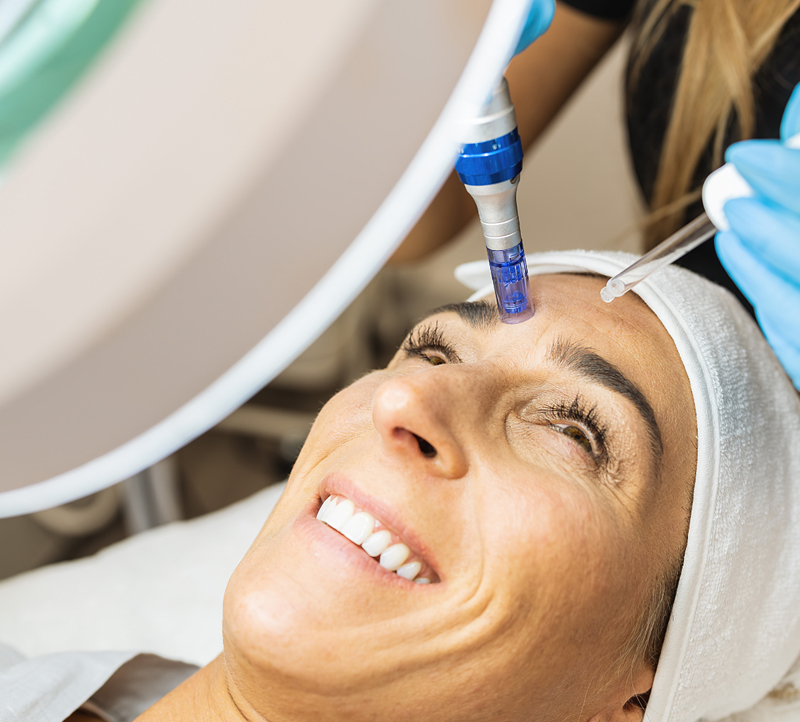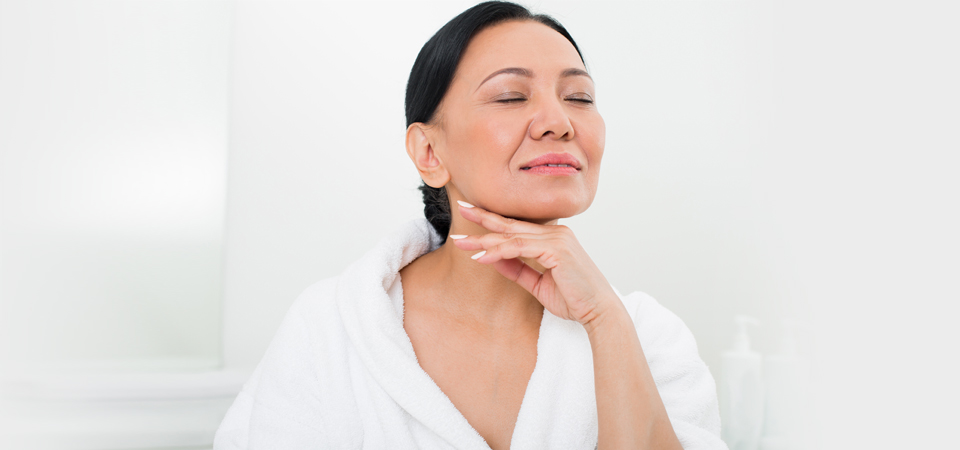
Microneedling is also known as Collagen Induction Therapy and can be used to treat scars and stimulate skin rejuvenation. It also promotes improved skin texture, firmness, and hydration.
It is a minimally invasive, non-surgical procedure that involves tiny needles being inserted into the upper layers of the skin in order to stimulate skin repair. As a result of this minor ‘needling’ trauma, the skin goes into a rapid repair mode surging collagen and elastin to the site. The result during this rapid cell turnover, is a firmer, smoother, more glowing, youthful complexion.
Pain Relief:
Numbing cream
Duration:
45-60 minutes
After Treatment:
Some redness and sensitivity. We recommend that you use simple moisturisers and sunblock for 3-5 days after treatment.
Recovery Time:
1-3 days
No. of Sessions:
4-8 sessions depending on skin type (1 every 4-6 weeks)
Results Last:
Up to 12 months after your last session. Top up sessions recommended
When do results become visible?:
Immediate plumping effect. Up to 6 weeks to see full results.
Price:
From £350
Microneedling involves a device (microneedling pen or roller) that creates controlled skin injury in order to stimulate the skin’s natural repair response. Small needles are used to cause tiny punctures to the skin and in response to the trauma, the skin will repair and generate new collagen, elastin and glycosaminoglycans (skin hydrators) such as hyaluronic acid. This makes the skin look brighter, more hydrated, smoother and helps to treat pigmentation and acne scars.
Each pass of the microneedling pen also creates small channels that enable the absorption of nutrients into the deeper layers of the skin.
As the epidermis remains intact, the procedure can be repeated safely and is also suited to regions where laser treatments and deep peels are not typically performed.
Microneedling can be enjoyed as a standalone treatment to address, lack lustre skin, scarring and pigmentation. It can also be combined with other treatments to enhance the overall effect.


All forms of acne scars, most surgical scars including facelift scars, abdominal scars, breast plastic operation, post liposuction scars, orthopedic scars, stretch marks and burn contracture scars can safely be treated.
The fine needles are rolled over the scar tissue enabling the break down and stimulation of the skin cells, helping them proliferate and heal themselves. Microneedling acne treatment is proven to boost collagen and elastin formation by improving the blood supply. This device is developed on the principles of neo-collagenesis and neo-angiogenesis, both of which enable the skin to better absorb acne skin care products used post treatment.
A staggering 95% of people aged 11-30 will suffer with acne to some degree many to the point where it can impact their confidence. At Sonria like all of the treatments that we offer, we treat Acne holistically. Whether it be teen or adult, active or residual, we can provide a comprehensive treatment programme that will address the appearance of acne and any residual skin trauma such as scarring or pigmentation. Book in for a consultation where we can assess your skin, discuss your desired outcomes and walk you through your options.
Microneedling can be enjoyed as a standalone treatment to address, lack lustre skin, scarring and pigmentation. It can also be combined with other treatments to enhance the overall effect. Examples include:
Microneedling is a treatment that involves tiny needles creating micro-injuries in the upper layers of the skin to promote skin repair and rejuvenation. A vitamin solution is applied to the skin, and a pen with fine needle tips is gently passed over it. Microneedling can also be combined with an acid peel for more intensive resurfacing, helping to refine the skin and minimise pores.
Microneedling activates the body’s natural healing process. Each pass of the microneedling pen creates small micro-injuries and channels, allowing nutrients to penetrate deeper into the skin. This process stimulates the production of new collagen, elastin, and hydrating agents such as hyaluronic acid. As a result, the skin becomes brighter, more hydrated, and smoother, while also addressing pigmentation and acne scarring.
Microneedling can be paired with an acid peel. A natural acid blend is applied after the treatment, and the tiny channels created allow the acid to penetrate more deeply, helping to smooth scars, reduce pigmentation, and shrink pores.
Yes, as the epidermis remains intact, the procedure can be repeated safely and is also suited to regions where laser treatments and deep peels are not typically performed.
Although the needles puncture the dermis layer of your skin, it will not damage it in any way. It is normal for the area treated to be a little sensitive once commenced, and you may experience some redness. You will be advised of any necessary after care instructions, if need be.
For optimal results, we typically suggest you have four to eight sessions, spaced four to six weeks apart. However, individual needs and results will vary.
After the course of treatment is completed, collagen growth continues for up to year after your last needling session. It is, therefore, advised that you have ‘top up’ session during the year to continue the collagen stimulation.
Microneedling is suitable for most skin types and can effectively treat a range of concerns such as fine lines, wrinkles, acne scars, pigmentation, and enlarged pores. However, results may vary depending on individual skin concerns and conditions. A consultation with a skincare professional is recommended to determine if it’s the right treatment for you.
Initial results, such as brighter and smoother skin, can be noticeable within a few days of the treatment. However, as microneedling stimulates collagen production, the full benefits—such as improved texture, reduced pigmentation, and smoother scars—typically develop over a few weeks, with optimal results seen around 4 to 6 weeks after the procedure.
Mild side-effects are common with microneedling and can include redness, slight swelling, and sensitivity at the treatment site, which usually subside within 24 to 48 hours. In some cases, mild bruising or flaking of the skin may occur. To minimise these effects, it’s advised to avoid direct sun exposure and follow post-treatment care instructions provided by your practitioner.